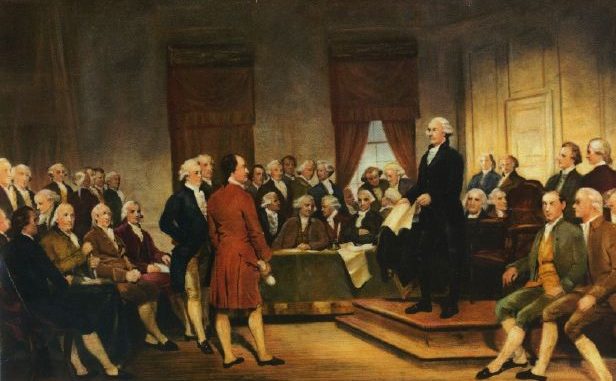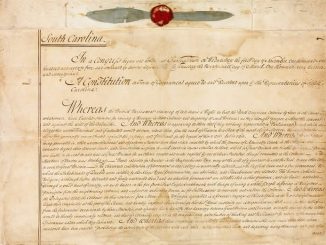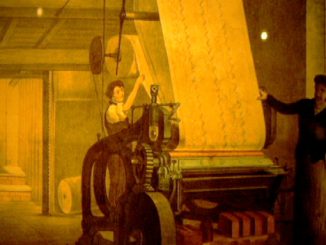
The process began with the proposal of James Madison’s Virginia Plan. Madison had dedicated the winter of 1787 to the study of confederacies throughout history and arrived in Philadelphia with a wealth of knowledge and an idea for a new American government. Virginia’s governor, Edmund Randolph, presented Madison’s plan to the convention. It featured a bicameral legislature, with representation in both houses apportioned to states based upon population; this was seen immediately as giving more power to large states, like Virginia. The two houses would in turn elect the executive and the judiciary and would possess veto power over the state legislatures. Madison’s conception strongly resembled Britain’s parliament. It omitted any discussion of taxation or regulation of trade, however; these items had been set aside in favor of outlining a new form of government altogether.
Widget not in any sidebars
William Patterson soon countered with a plan more attractive to the new nation’s smaller states. It too bore the imprint of America’s British experience. Under the New Jersey Plan, as it became known, each state would have a single vote in Congress as it had been under the Articles of Confederation, to even out power between large and small states. But, the plan also gave Congress new powers: the collection of import duties and a stamp tax, the regulation of trade and the enforcement of requisitions upon the states with military force.
Alexander Hamilton then put forward to the delegates a third plan, a perfect copy of the British Constitution including an upper house and legislature that would serve on good behavior.
Confronted by three counter-revolutionary options, the representatives of Connecticut finally came up with a workable compromise: a government with an upper house made up of equal numbers of delegates from each state and a lower house with proportional representation based upon population. This idea formed the basis of the new U.S. Constitution, which became the law of the land in 1789.





Be the first to comment